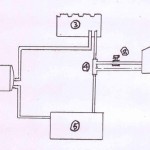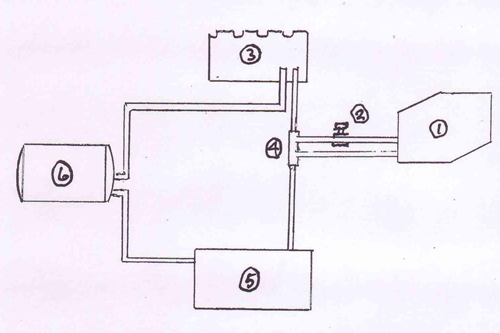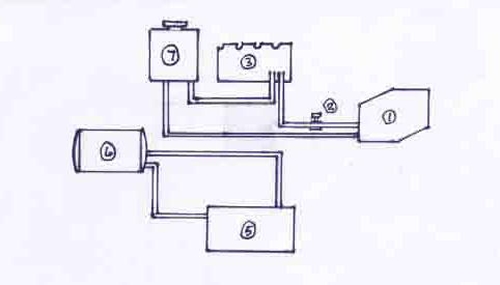Judging by the articles on the MoA website and the Web, it appears generally acknowledged that the Ardic heater which as installed by Nimbus, is less than effective at heating the cabins. We had the heater unit serviced last winter by the local agent and whilst resolved the sooty deposits on the stern, the heating was no better. It appears that in pre heating the engine, heat the fresh water and the cabin is beyond the capabilities of the system unless also running the engine. The basic problem is that the system initially heats the cast iron mass of the engine which I believe takes 3kW, therefore the temperature of the air to the cabin is cool to say the least. The pipework diagram in the manual suggests that this should not be the case, but on a cold day working on the engine with the heating on, the engine was starting heating up but the cabin was not.
After trawling the internet for a solution that did not involve replacing the entire system to no avail, we decided to make a major modification to the pipework. We did however have the revised pipework scheme reviewed by the local agent, who helpfully gave me a contact number for an engineer that was employed by Ardic and now with Eberspacher UK.
The engineer when approached made an interesting if somewhat alarming statement in a mail, I quote as follows:
We would recommend removing your Ardic heater from the engine circuit totally. If the heater is switched on and the engine is not started then not only is the engine acting as a big heat sink (approx 3kW) but if the engine heats up and cools without running condensation, builds up within the engine, if the engine is not run for some time the oil can run away from the top end causing excess wear when the engine is eventually re started.
The other issues are opening your engines cooling circuit to the entire heating circuit adds many more leak possibilities, removing too much heat from an engine will cause it to run inefficiently, if the water returning from the heating system is too cool it can create excess cylinder bore wear and deformation on the first cylinder.
Generally the engine header tank is also lower than the highest component in the heating system leaving half the system full of air and running inefficiently also making it very awkward to bleed and keep bled.
Removing the engine and fitting a remote header tank will stop all of the above issues. Our marine dealer on the south coast has done in excess of 60 Maxi and Nimbus conversions to alleviate this problem.
Based on the above comments we decided to modify the system pipework so that the engine still heats the fresh water in the calorifier and nothing else. This option only partially resolves the problem of cooler water returning to the engine by reducing the pipework and eliminating the heater unit. However we took the view that the calorifier being heated by the engine was well worth keeping and normal on boats. A header tank was fitted to the heater circuit so that the heater only heated the air for the cabins, before and after pipework system diagrams are as follows:
| Fig. 1 As installed by Nimbus/Maxi
|
Fig. 2 Modified system
|
Code:
|
The header tank can be sourced from a local agent for automotive/marine heating with 2 inlet/outlets and a pressure release cap and should be located above and as close to the heater as possible with access for top up of the 50:50 water/antifreeze mix. The aft inboard end of the cockpit locker bulkhead above the floor boards cover is suitable.
Since the modification, the calorifier heats up as before, although we do not have the facility of heating domestic water with the heater. We have also lost the facility of warming the cabin with air heated by the engine. However the cabin heater vents now give out warm air which is acceptable, although still not as effective as a warm air heater system such as Mikuni or Eberspacher. We judge the modification a success and have avoided the worst of the potential dangers as outlined by the engineer.
Jim & Eric Sey of Second Rebellion


